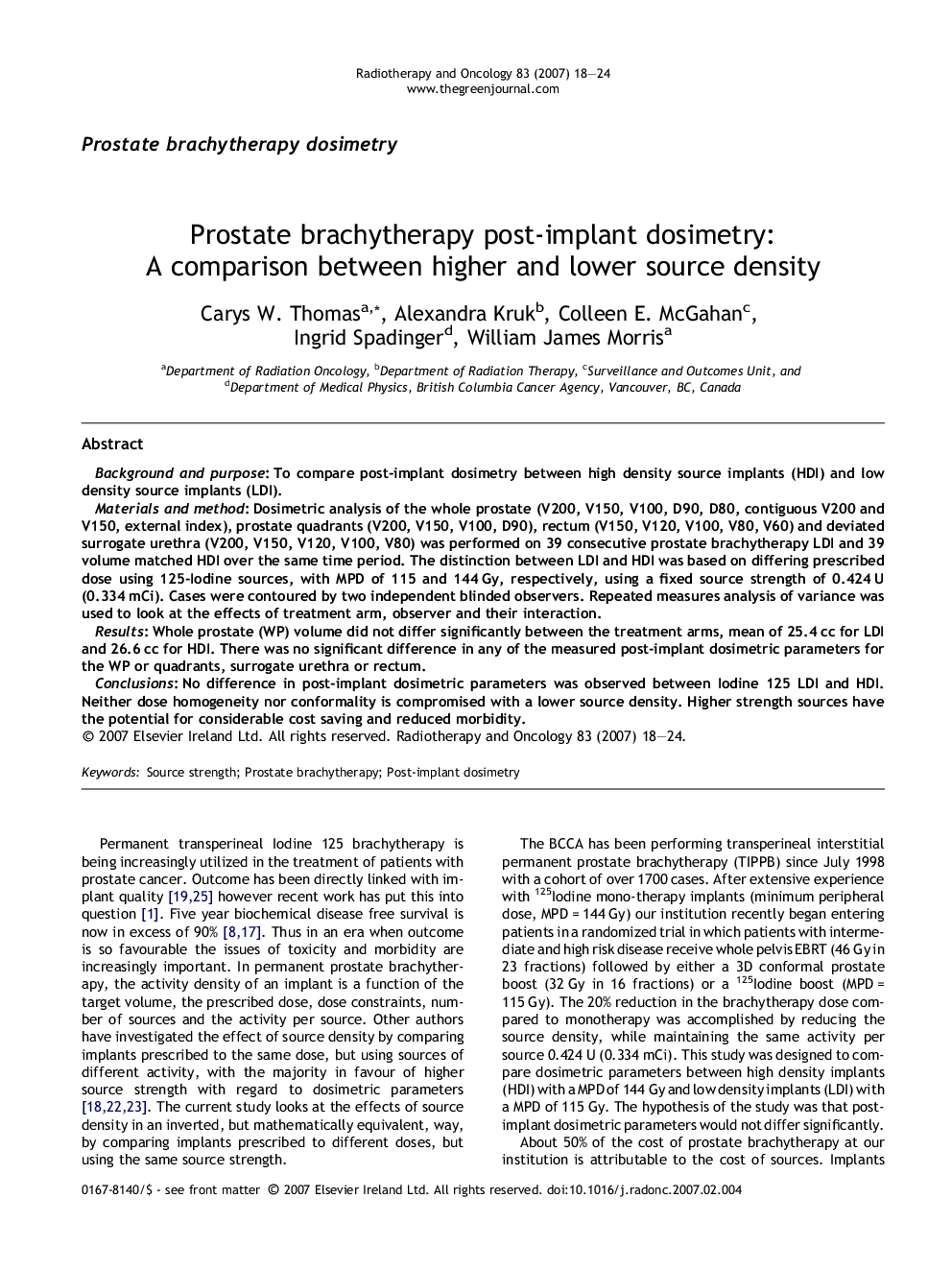| Article ID | Journal | Published Year | Pages | File Type |
|---|---|---|---|---|
| 2160486 | Radiotherapy and Oncology | 2007 | 7 Pages |
Background and purposeTo compare post-implant dosimetry between high density source implants (HDI) and low density source implants (LDI).Materials and methodDosimetric analysis of the whole prostate (V200, V150, V100, D90, D80, contiguous V200 and V150, external index), prostate quadrants (V200, V150, V100, D90), rectum (V150, V120, V100, V80, V60) and deviated surrogate urethra (V200, V150, V120, V100, V80) was performed on 39 consecutive prostate brachytherapy LDI and 39 volume matched HDI over the same time period. The distinction between LDI and HDI was based on differing prescribed dose using 125-Iodine sources, with MPD of 115 and 144 Gy, respectively, using a fixed source strength of 0.424 U (0.334 mCi). Cases were contoured by two independent blinded observers. Repeated measures analysis of variance was used to look at the effects of treatment arm, observer and their interaction.ResultsWhole prostate (WP) volume did not differ significantly between the treatment arms, mean of 25.4 cc for LDI and 26.6 cc for HDI. There was no significant difference in any of the measured post-implant dosimetric parameters for the WP or quadrants, surrogate urethra or rectum.ConclusionsNo difference in post-implant dosimetric parameters was observed between Iodine 125 LDI and HDI. Neither dose homogeneity nor conformality is compromised with a lower source density. Higher strength sources have the potential for considerable cost saving and reduced morbidity.
